What Is a Brand Book and Why Do You Need One?
A brand book is a crucial part of a strong brand image. It is used for marketing campaigns and all company communication, products, and services.
So that we have a better understanding of brand books, let’s look at businesses with the best and most effective ones to discover some examples of resourceful tips on brand book creation.
Definition of a Brand Book
A brand book is a set of instructions for using the company’s visual style with examples and illustrations. It contains acceptable and unacceptable options for the design and placement of the logo; what fonts, colors, and patterns to use; and design options for the main media, such as business cards, websites, and souvenirs.
The Aim of a Brand Book
A brand book organizes information about the business, which helps the company’s staff and anyone else engaging with it to find information quickly. Each team member has an understanding of the primary mission, standards, and values of the company. It is also shown to media, freelancers, and outsourced agencies when working together on projects. This helps create a business with a dynamic corporate culture.
Benefits of Creating Brand Guidelines
Building proper guidelines helps make your brand more recognizable. They are a key tool to help ensure brand consistency.
Businesses can evolve and change over time without them, but some changes have the potential to damage the value and reputation of the company.
Within the guidelines is the complete information regarding your brand identity, enabling you to make powerful marketing campaigns, expand to newer markets, and diversify. Employees can reference it whenever they need to reinforce the identity of the brand while creating new projects.
Also, customers can learn the true essence of the brand they buy from, which can cause them to relate more with its products or services. This can establish a relationship of trust and personalize their experience with the company, making them more likely to return to that specific business compared to other options in the marketplace.
Main Elements of a Brand Book
- Logo and logo guide
- Core color palette
- Typography
- Imagery
- Tone of voice: clearly defines the target audience (audience position about the brand)
Tips for Designing Effective Brand Books
- Research your target audience for whom you’re creating the guide
- Keep it simple
- Design the book in your brand style
- Be helpful and specific
- Involve your staff
10 Great Brand Book Examples for Inspiration
NASA
NASA’s Graphics Standards Manual is a perfect example of a successful brand book. At 220 pages, the detailed and complex guide contains several options for the placement, color use, and additional designs of the NASA logo.
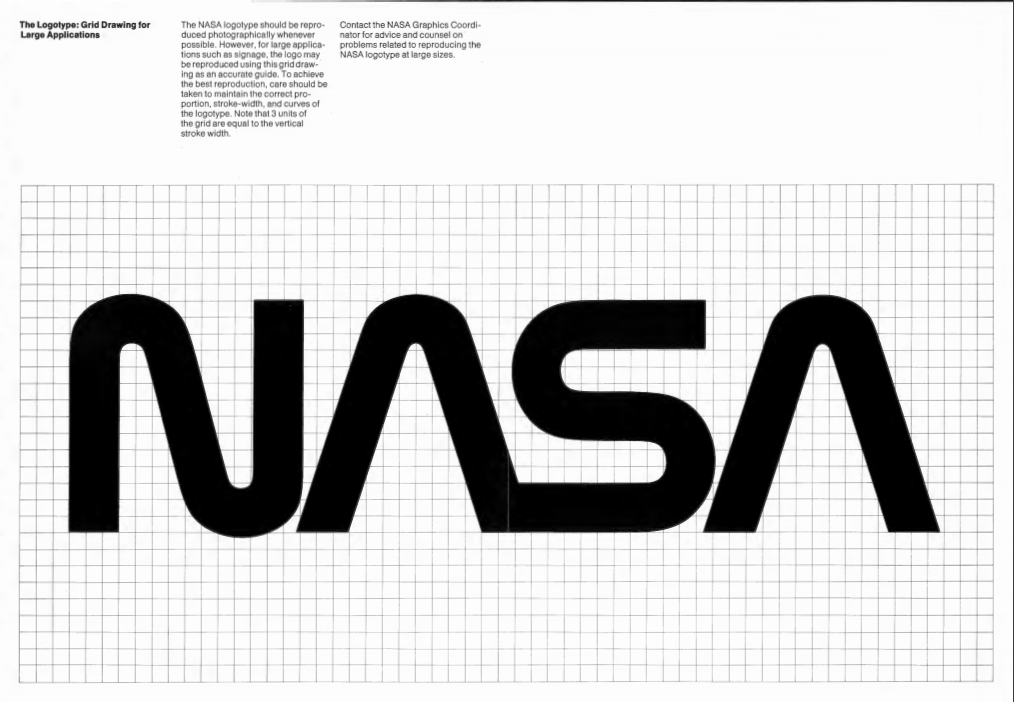
Source: NASA
Netflix
Netflix has a pretty straightforward logo and singular set of rules governing its placement. As the graphic shows below, the company is insistent on using a mono-red color for its logo and a centered placement wherever it is used.
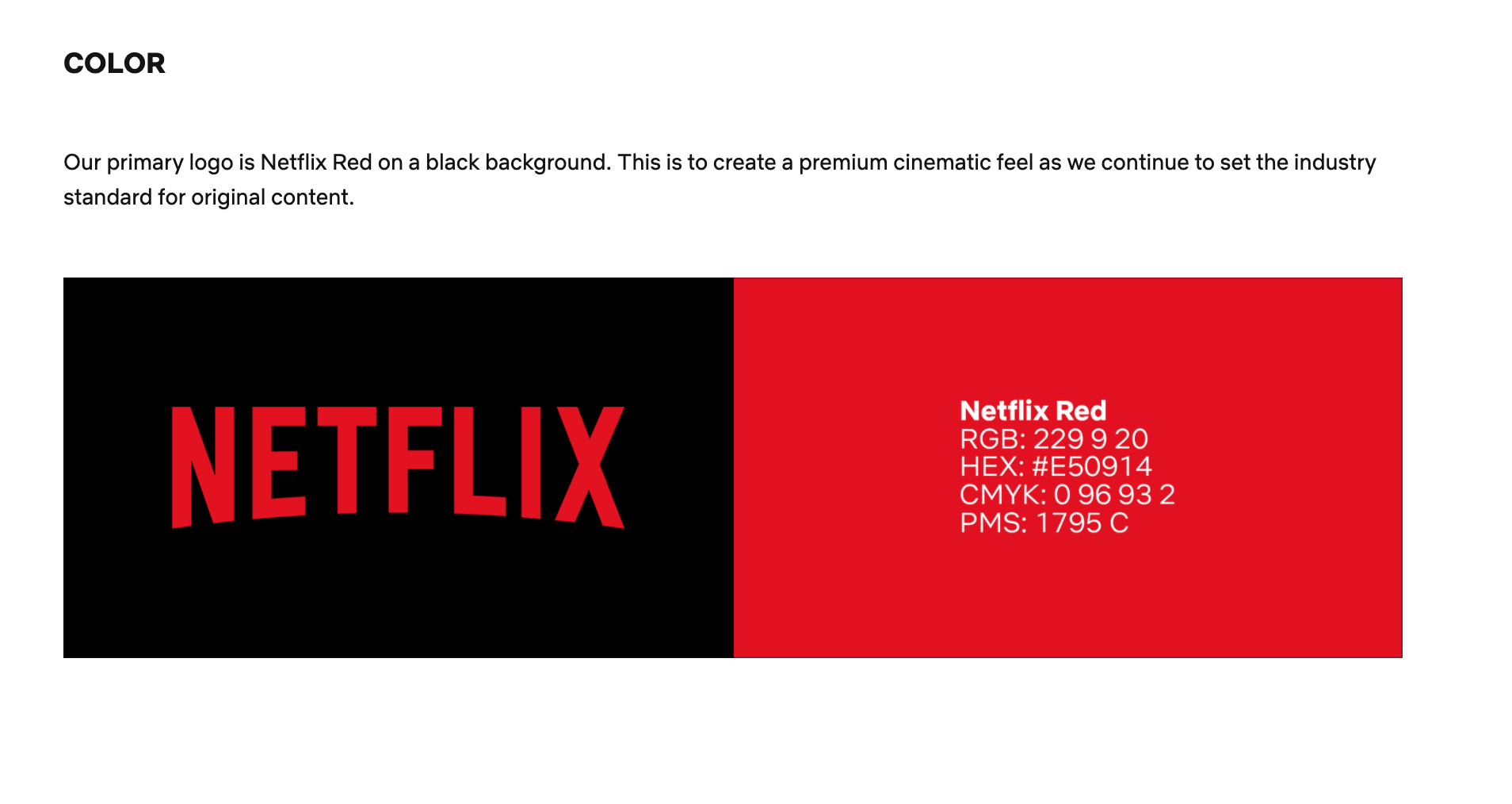
Source: Netflix
Cisco
Cisco’s interactive online brand book goes through the company’s corporate vision, strategy, and mission. It also allows users access to its proprietary typeface, “CiscoSans.” Curious to find out more about Cisco’s color palette? The business has a separate webpage just for that topic.

Source: Cisco
Coca-Cola
The company’s swooping and striking Coca-Cola font is highly valued and is one of the outlining features of its brand book. The colors red and white are the primary focus of the logo. Its use is tightly controlled by the company and restricted with stringent rules about its placement and size.
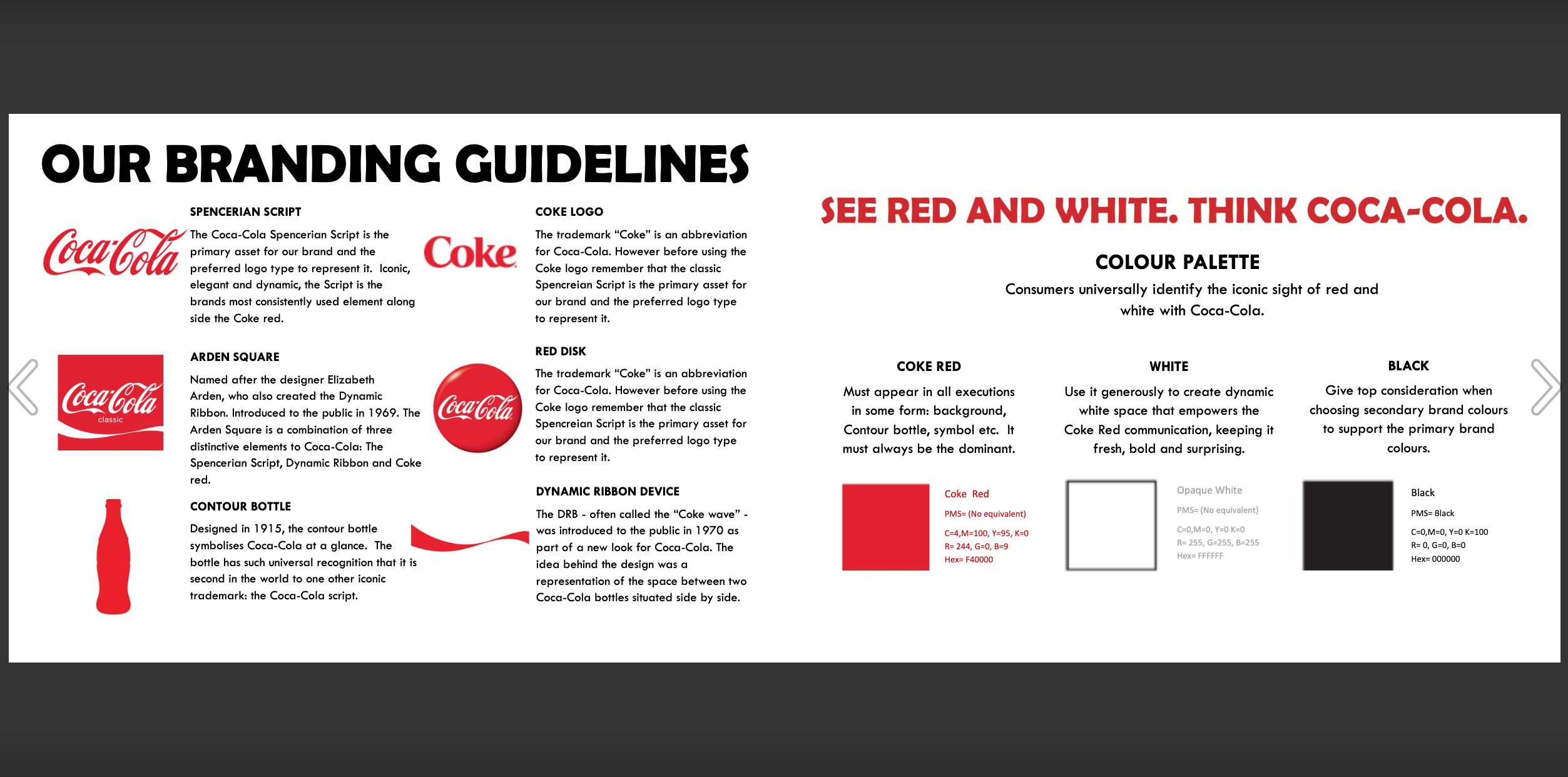
Source: Coca-Cola
Jamie Oliver Ltd
Jamie Oliver has a comprehensive brand style guide covering logo placement across all of its kitchenware items. The company also includes an extensive color palette in the guidelines, with each color sorted by the product it should be used with for consistency.
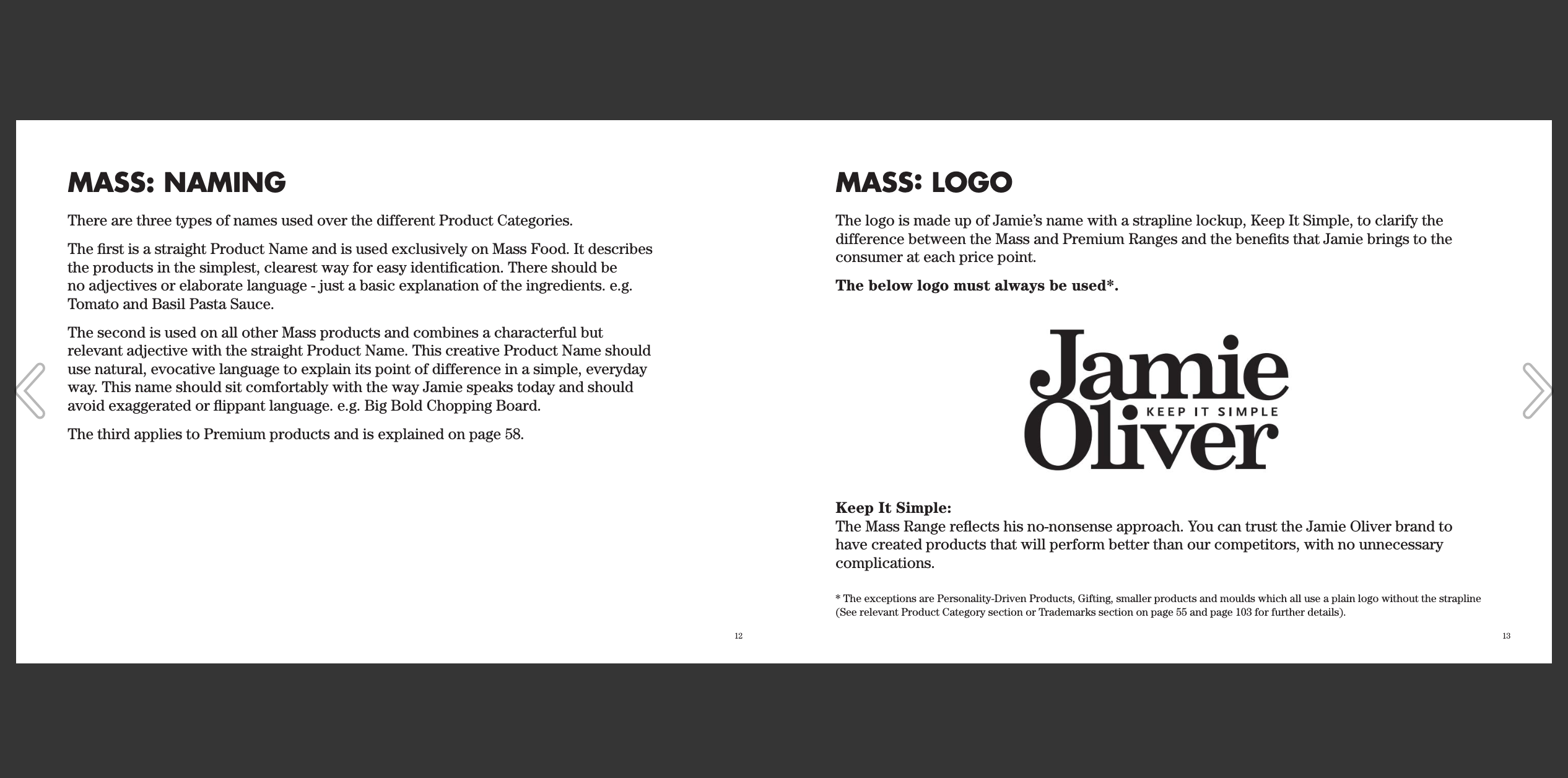
Source: Jamie Oliver Ltd
Urban Outfitters
It is not the vibrant shade and colorful tone of voice that makes Urban Outfitters’ guide stand out. Instead, it’s the company’s open and cheeky treatment of its target audience. The brand book clearly outlines the type of customer Urban Outfitters is looking for to carry their corporate image.
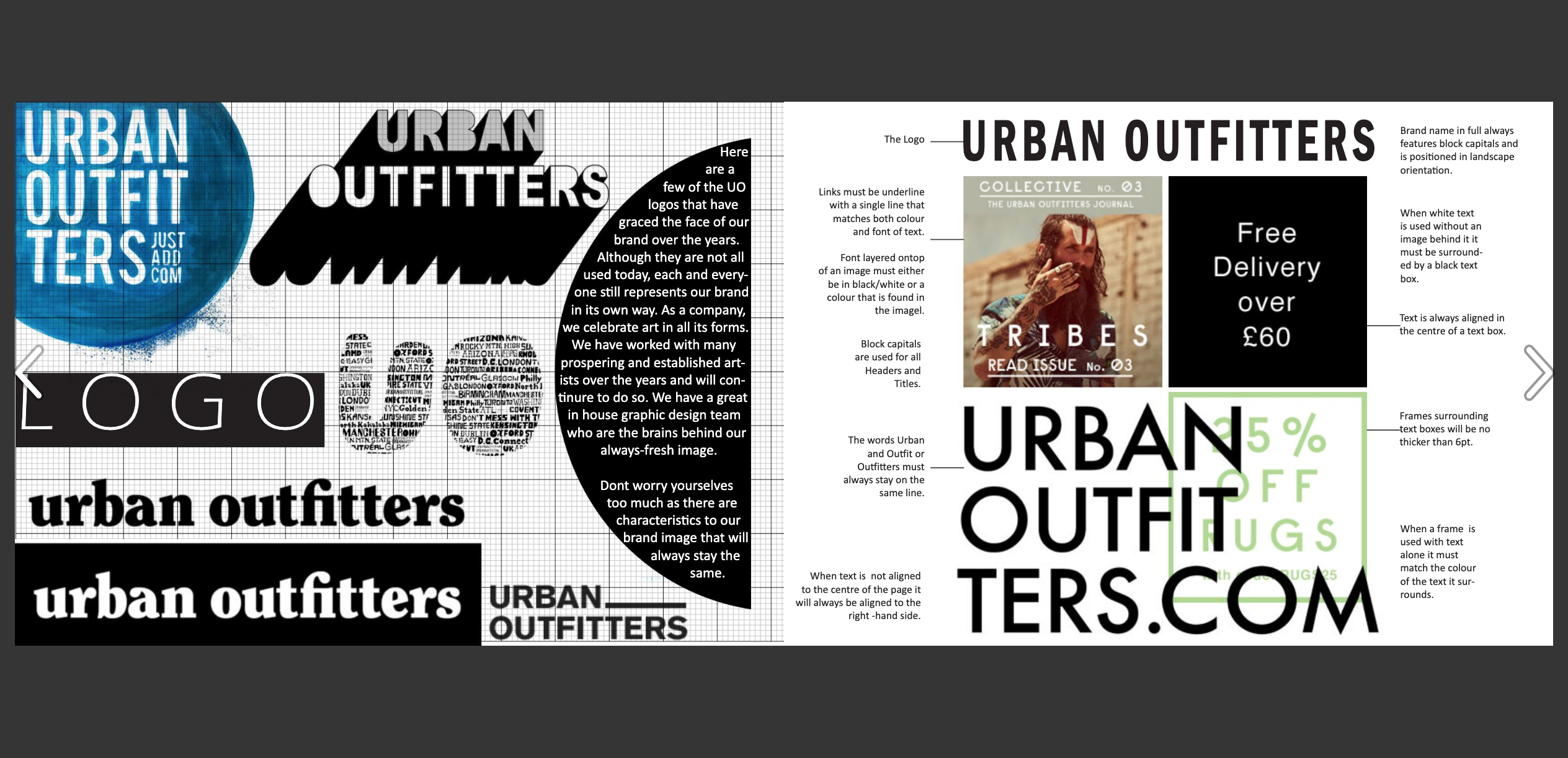
Source: Urban Outfitters
Honorable Mentions
The following brand books, while not as impressive, are additional sources of inspiration that will undoubtedly help you create impactful and effective style guidance:
— Bacardi
Conclusion
Brand books play a significant role in business recognition and building relationships with customers. They give your audience insight into your brand and help them identify your business from a sea of other companies in your industry.
It also helps your employees, especially those who work with visuals, such as designers and the marketing team. They can reference the brand guide whenever they need to create new designs and stay true to the company identity.
You should give it to anyone who might need it from your customers, clients, employees, partners, and more. By providing them with a comprehensive handbook of your identity, you can always make sure you are on the same track with your staff and customers.
Short FAQ
- Why do you need a brand book?
The content in a brand book must include the company’s mission, culture, values, and tone, as well as visual materials such as logos, fonts, copywriting, and designer instructions.
- What are the components of a style guide?
The following list includes components that have to be included to follow company standards within your group in the business and outside of it. Note that for transparent company communication, these brand book elements have to be coherent and concise.
-
- Brand story and company history
- Logo
- Color palette
- Typography
- Imagery
- Voice
- Brand story and company history
- What is the purpose of a brand book?
A brand style guide is a critical document that describes your company’s design standards to everyone involved in the content creation process. This provides coherency and consistency when communicating with your audience.
- How should you end a brand book?
At the end of your guidance, include the relevant contacts and email addresses of your staff. It’s necessary if readers have questions that weren’t covered in the guide.



![Your Guide Integrating Audio Into Brand Communication [Infographic]](https://depositphotos-blog.s3.eu-west-1.amazonaws.com/uploads/2020/11/A-Guide-Integrating-Audio-Into-Brand-Communication-Infographic.png)




